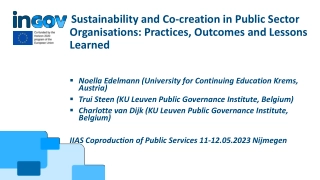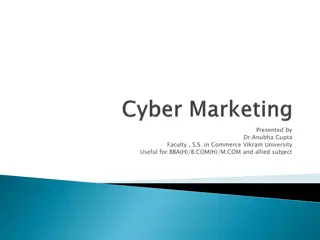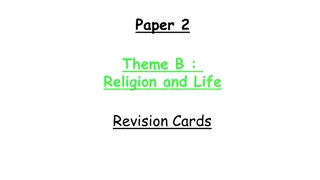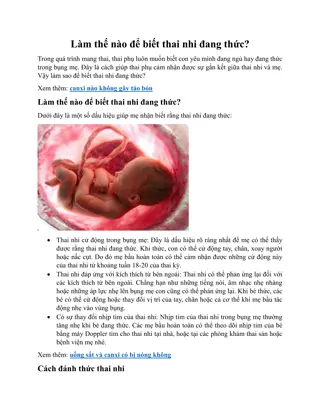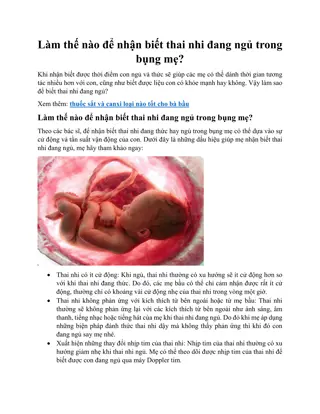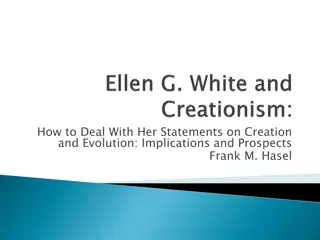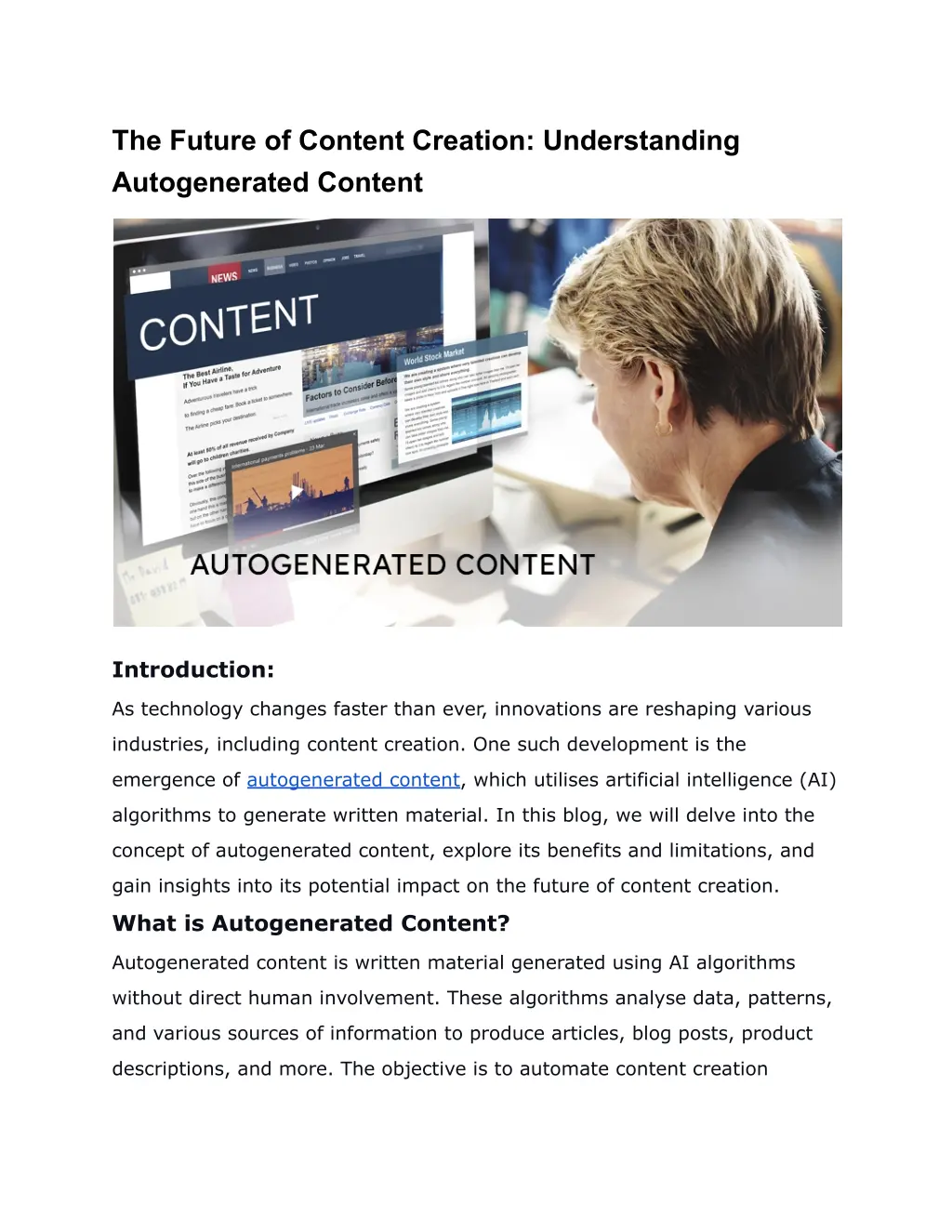
The Future of Content Creation_ Understanding Autogenerated Content
As technology changes faster than ever, innovations are reshaping various industries, including content creation. One such development is the emergence of autogenerated content, which utilises artificial intelligence (AI) algorithms to generate written material
Download Presentation

Please find below an Image/Link to download the presentation.
The content on the website is provided AS IS for your information and personal use only. It may not be sold, licensed, or shared on other websites without obtaining consent from the author. Download presentation by click this link. If you encounter any issues during the download, it is possible that the publisher has removed the file from their server.
E N D
Presentation Transcript
The Future of Content Creation: Understanding Autogenerated Content Introduction: As technology changes faster than ever, innovations are reshaping various industries, including content creation. One such development is the emergence of autogenerated content, which utilises artificial intelligence (AI) algorithms to generate written material. In this blog, we will delve into the concept of autogenerated content, explore its benefits and limitations, and gain insights into its potential impact on the future of content creation. What is Autogenerated Content? Autogenerated content is written material generated using AI algorithms without direct human involvement. These algorithms analyse data, patterns, and various sources of information to produce articles, blog posts, product descriptions, and more. The objective is to automate content creation
processes, enabling businesses to make large volumes of content quickly and efficiently. Benefits of Autogenerated Content: Time and Cost Efficiency: Autogenerated content can reduce the time required for creation. AI algorithms can generate content at scale, allowing businesses to produce large quantities of material quickly. Consistency: Autogenerated content follows predefined rules and guidelines, resulting in consistent writing styles, formats, and tones across different pieces of content. This consistency can enhance brand identity and improve user experience. Data-Driven Insights: AI algorithms can analyse immense data to identify trends, preferences, and patterns. Autogenerated content can leverage these insights to produce highly targeted and personalised content catering to specific audience segments. Multilingual Content: With the ability to process multiple languages, autogenerated content can facilitate the creation of content in different languages, enabling businesses to expand their global reach and engage with diverse audiences. Limitations and Challenges: Lack of Creativity and Originality: While autogenerated content is efficient, it often needs more creativity, uniqueness, and authentic voice than human-generated content possesses. AI algorithms need help replicating human creativity and often produce generic or formulaic content. Quality Concerns: Autogenerated content includes inappropriate language. Human oversight is a crucial component. While AI models can produce text at scale and speed, they are flexible and sometimes have errors, biased content, or outdated or incorrect information. Limited Contextual Understanding: AI may need to understand topics with help. This limitation can lead to content that requires more depth and resonates with the intended audience. Legal and Ethical Considerations: Autogenerated content raises legal and ethical questions, particularly regarding intellectual property rights, plagiarism, and disclosure of AI-generated material. Businesses
must navigate these considerations to avoid legal ramifications and maintain ethical content practices. The Future of Content Creation: Autogenerated content is poised to play a significant role in the future of content creation. While it presents opportunities for efficiency and scalability, it partially replaces human-generated content. The best approach is to strike a balance between the two, leveraging the strengths of AI algorithms while maintaining the creative input and expertise of human content creators. Conclusion: Understanding the concept of autogenerated content is vital for staying ahead in the ever-evolving landscape of content creation. By embracing its potential, acknowledging its limitations, and strategically combining it with human-generated content, businesses can unlock efficiency, scalability, and new opportunities for engaging their target audience in meaningful ways.

